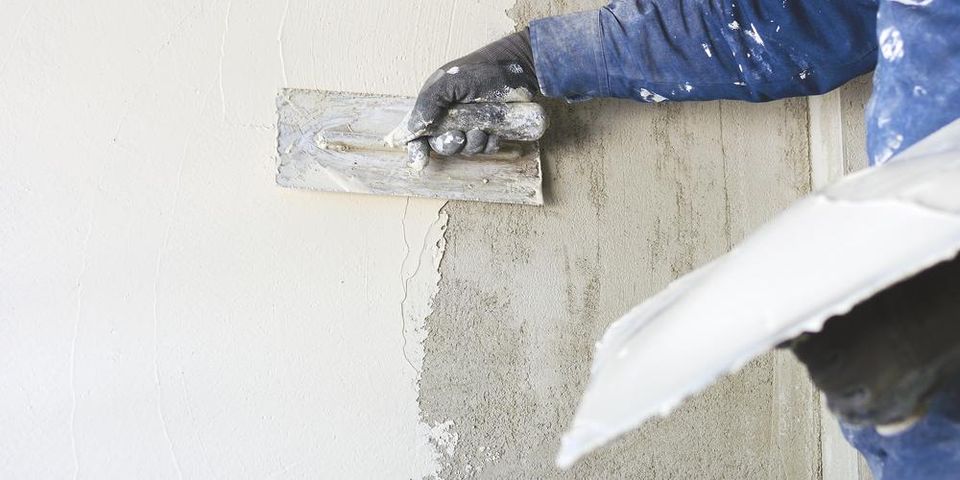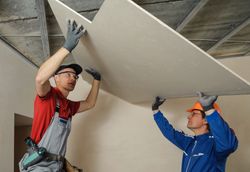
Many homeowners have to perform drywall and plaster repair at some point. These fixes may range from replacing wall sections that have sustained water damage to patching up an area where the dog chewed a hole. Even though plaster and drywall are common materials, many people don’t know much about them. Read these frequently asked questions as answered by E and E Painting LLC in St. Louis, MO, so you’re prepared before you decide to attempt a DIY plaster or drywall fix.
Drywall & Plaster Repair FAQs
1. What Are Plaster & Drywall Made Of?
Today’s plaster consists of calcium sulfate, which is also known as mineral gypsum. It is a fine powder that creates a mud-like substance when mixed with water. Drywall is made of two sheets of thick paper that encase plaster in the middle to form large sections used in ceiling and wall construction.
2. How Long Does Drywall & Plaster Repair Take?
Timelines for these projects vary widely based on the size of the plaster repairs. Typically, the material takes several days in a heated home to fully cure. If additional layers are needed—such as if you need to match a specific wall texture—the drying time must be extended for the two-part application.
3. Can I Handle Plaster Repair & Drywall Installation Myself?
 Many homeowners perform small plaster repairs, as it is easy to mix up the powder and fill holes or patch small spots. Larger fixes may require the help of a professional. Drywall installation, on the other hand, is not as simple as applying plaster and letting it dry. This process requires precise measurement and nailing skills to ensure the right fit. It is often best to leave this task up to professional drywall installers.
Many homeowners perform small plaster repairs, as it is easy to mix up the powder and fill holes or patch small spots. Larger fixes may require the help of a professional. Drywall installation, on the other hand, is not as simple as applying plaster and letting it dry. This process requires precise measurement and nailing skills to ensure the right fit. It is often best to leave this task up to professional drywall installers.
4. Can I Hang Things From Fresh Drywall or Repaired Plaster?
Once you’ve fixed drywall or done plaster repairs, you’ll likely want to continue redecorating and finishing the room. This often means hanging photos and artwork or installing shelving. Items that are light, such as small photo frames, can be hung on nails pounded directly into the drywall. You should nail or screw heavier items, such as floating shelves, into the supporting boards behind the drywall with the help of a stud finder for better safety and weight-bearing stability.
With proper drywall and plaster repairs, you can totally transform the look of a room. From adding new drywall to a recently installed wall to patching up old holes left behind from a previous owner, it’s possible to create the perfect canvas for your next big interior paint job with these two materials. To learn more about professional drywall and plaster repair, call E & E Painting LLC at (314) 399-9387 or visit the website for information on their outstanding workmanship and budget-friendly commercial and residential painting services.
About the Business
Have a question? Ask the experts!
Send your question

